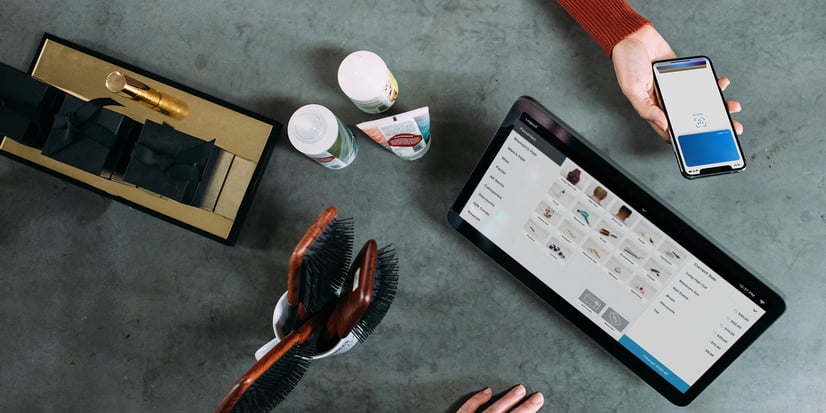How to get ready for the rise of mobile payments in retail

The retail payment space is going through a sea change, and the Starbucks mobile payments app is a shining example of that. Despite being specific to one retailer, in 2018 the app held the title of top mobile payment app in the US. During that year, 23.4 million people aged 14 and above used the app to make a POS purchase at least once every six months, according to estimates from market research firm eMarketer. Even though in 2019 it was finally overtaken by Apple Pay, which racked up an estimated 30.3 million users compared to Starbucks’ 25.2 million, the widespread adoption of the Starbucks app shows that retailers can get true value out of mobile payments.
Key to Starbucks’ success has been its ability to combine convenience, ease and reward in the payments experience. Its Mobile Order and Pay functionality lets users order ahead of time and skip queues. The app is also integrated with the Starbucks Rewards loyalty program, allowing customers to automatically earn points (called Stars) and start earning free drinks and food. Customers can even add a tip to purchases. The value of using this app to pay is clear and simple: you can save time and money at the till, and access rewards and special offers at the same time.
Stores upgrade their payments options
Over the last few years cash has been losing its market share to electronic payments methods, which give consumers a faster, more secure and convenient experience when shopping both in store and online.
As consumer preferences move away from traditional payment methods towards mobile checkout technologies such as Apple and Android Pay, contactless card payments and direct bank transfers, retailers must be prepared to accept these new methods.
In the US, it’s estimated that around 70% of retail stores are now equipped to accept Apple Pay and similar mobile payments apps. As more credit card companies and banks shift to chip-based cards, retailers are forced to upgrade their checkout systems and. Those who think ahead are opting for readers that can also accept payments from smartphones using near-field communication (NFC) technology. Invest in contactless payment options
Millions of consumers now have contactless-enabled cards in their wallets and mobile payment apps on their phones. This tap-and-go technology is fast becoming the norm for customers – and therefore something they expect when making a purchase. Contactless transactions are particularly popular for smaller ticket purchases in convenience stores and supermarkets, and now frequently replace cash. This kind of technology also offers many benefits to retailers, including decreased checkout times, increased card use and an improved consumer payments experience.
Combine convenience and rewards
While contactless payments are an in-store essential, retailers must also consider a holistic payments strategy across all channels to ensure they’re meeting their customers’ expectations and delivering a seamless experience. That means embracing tools and technologies that harness consumer trends around cashless payments and connect both the digital and physical, enabling customers to order ahead and pay in advance, pick up reward program points regardless of the channel they shop via, and take advantage of new “buy now, pay later” options such as Klarna and Laybuy. Being able to offer a wide variety of payment options will be critical as retailers look to build their presence in an increasingly digital marketplace that is characterized by convenience and speed.
Explore digital wallet providers
While businesses like Starbucks decided to build their own mobile app, most retailers do not need to go down this route. That’s because digital wallet providers like Apple Pay and Google Pay are already designed to make setting up mobile payments fast and affordable.
Today, there are dozens of digital wallet payment providers for retailers – and consumers – to choose from. It’s worth talking with your existing payment provider to understand what options they have available as you develop your own mobile payments and digital wallets strategy.
Be open to payments innovation
As payment solutions are transforming from purely transactional to more customer oriented, the friction of payments will continue to fade with further innovations coming to market.
Invisible payments, for example, offer consumers ultimate convenience and completely automated payment options. Although they’re still in their infancy in the retail space, they’re being driven by businesses like ride-sharing app Uber, which automatically collects payment once a customer has reached their destination. Innovative retailers such as Amazon and Dutch supermarket brand Albert Heijn are already trialing invisible payments in stores with success. These shopping concepts allow customers to simply pick up or scan the products they want and leave without having to check out. Instead, payment is automatically deducted from their account.
“Connected cars, automatic replenishment via internet of things devices, and increasingly friction-free checkout experiences at the physical point of sale are just a few of the practical applications of invisible payments,” Worldpay’s Global Payment Trends report said.
As retailers plan for the future, then, it is in their best interests to be aware of the latest payments innovations and to consider how they will play out in their industry.
To find out more about how the payments industry is continuing to evolve and how it is affecting retail, read our latest report, “The future of payments: Current and future trends from mobile payments to e-money.”

